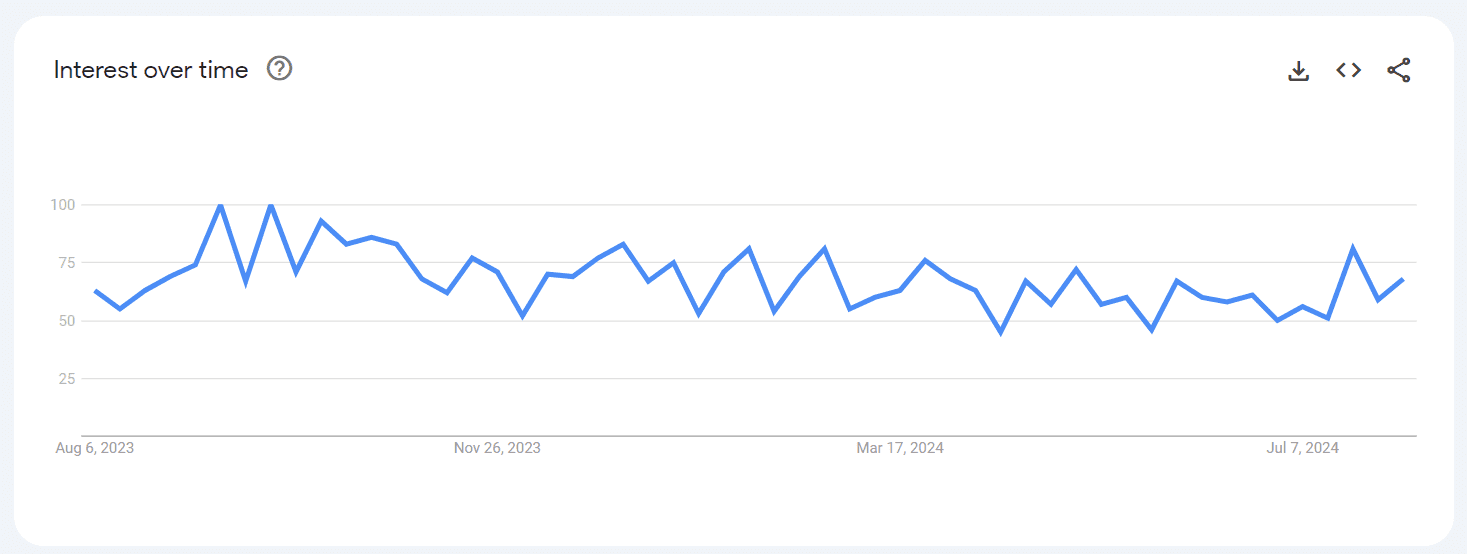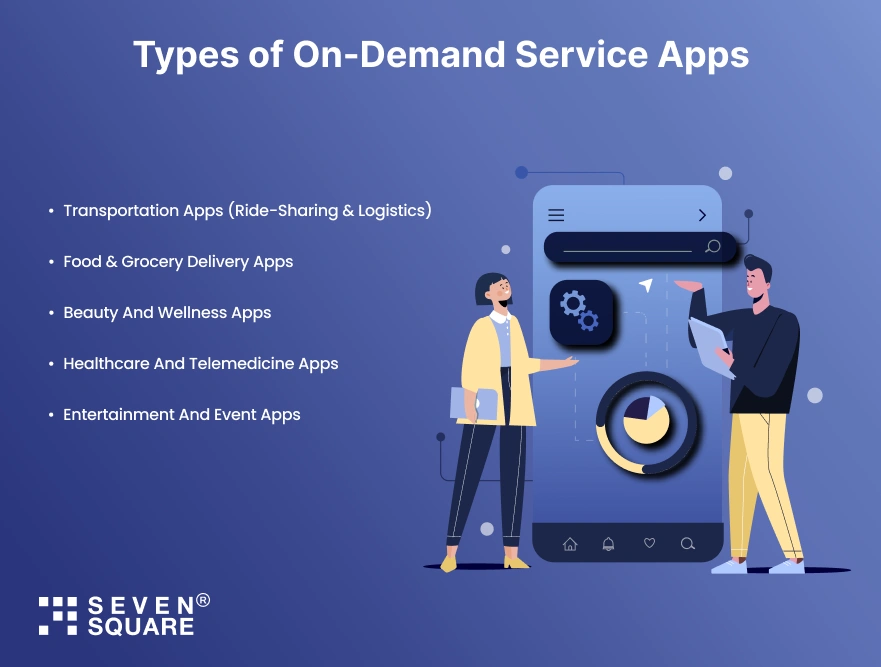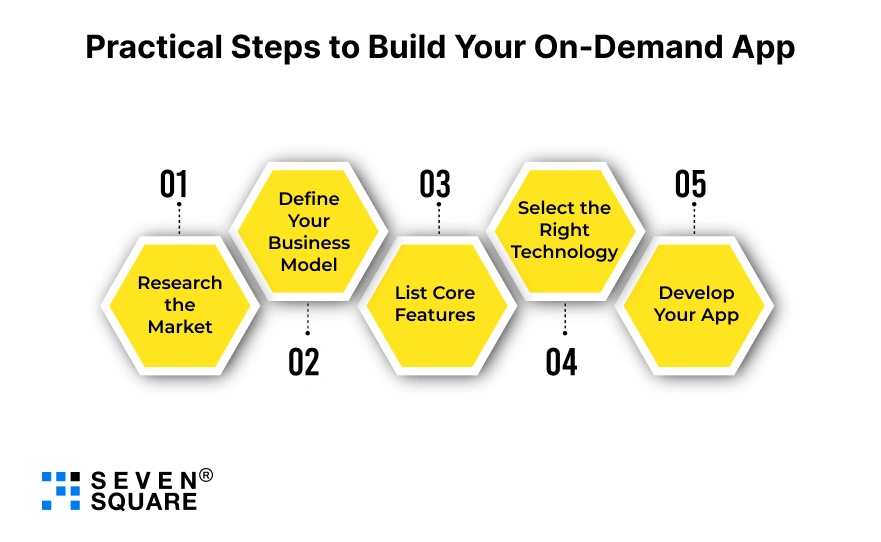Since the pandemic, digital platforms have become essential for both individuals and businesses.
On-demand app development has accelerated, offering solutions that connect users with services instantly. There are numerous on-demand service apps such as Uber, Instacart, Netflix, GrubHub, etc. People utilize these apps for daily tasks such as shopping, cooking, driving, and housekeeping.
This blog explores the latest trends and technologies shaping on-demand apps, offering insights into building an app that meets modern user needs and presents new business opportunities.

Understanding On-Demand Apps and Business Models
On-demand apps are digital solutions that let users access services quickly via their mobile devices. They play a vital role in industries like transportation, food delivery, and healthcare. Apps like Uber and GrubHub connect users with services in real-time, using technologies such as GPS and AI to ensure fast and efficient delivery.
How Does On-Demand Business Models Work?
These apps operate by offering services upon request. The process involves:
- Request: Users order a service through the app.
- Match: The app finds an available provider.
- Delivery: The service is fulfilled promptly.
A seamless user experience requires simple, secure payment systems and easy access to services anytime, anywhere.
Watch this, Zomato’s CEO and investor Sanjeev Bikchandani discuss the initial skepticism surrounding the company’s foray into 10-minute delivery and how they successfully defied expectations and turned it into a profitable venture.
‘Soon, Blinkit will be bigger than Zomato’: Deepinder Goyal
On-Demand Apps Developed by Seven Square
-
We have developed various on-demand applications, including:
- My Drop Yard App: Streamlines parking spot booking.
- CountMee App: A multi pickup and delivery location courier app.
- Waitlist Hero: Manages service bookings efficiently.
We provide end-to-end solutions, encompassing requirement gathering, mobile app UI design, development, API integration, and admin dashboards. Our comprehensive approach is tailored to enhance user engagement and drive business growth.
“The market of on-demand Apps represents a major change in customer behavior rather than a temporary trend.”
Types of On-Demand Service Apps

On-demand service apps can be categorized into three main types: business-to-customer (B2C), business-to-business (B2B), and customer-to-customer (C2C).
1. Transportation Apps (Ride-Sharing & Logistics):
Examples include Uber, Lyft, and DiDi, which offer convenient ride-sharing options. Logistics apps like GoPuff and Shyp provide flexible delivery services, such as same-day delivery, enhancing convenience for both businesses and customers.
2. Food & Grocery Delivery Apps:
Apps like Uber Eats, DoorDash, and Instacart enable users to order food or groceries for home delivery. Key features include real-time order tracking, making it easy for users to see when their orders will arrive.
3. Beauty and Wellness Apps:
Apps such as Glamsquad and StyleSeat connect users with beauty services like haircuts and massages at home. These apps offer personalized experiences, saving users time and effort by bringing services directly to them.
4. Healthcare and Telemedicine Apps:
Apps like Teladoc and Doctor on Demand offer online medical consultations via video or phone, providing 24/7 access to healthcare professionals. Users can easily schedule appointments and get medical advice without needing in-person visits.
5. Entertainment and Event Apps:
Eventbrite and StubHub allow users to purchase tickets for events, while apps like Netflix provide on-demand access to movies and shows. These apps facilitate quick ticket purchases and provide a broad reach for event organizers.
The Role of 5G, AR, Low-Code, and Sustainability
How 5G Improves On-Demand Apps
5G technology is revolutionizing on-demand apps by offering unprecedented speeds and ultra-low latency, enabling real-time interactions and high-quality user experiences. According to Deloitte, 5G allows for seamless connectivity across devices, enhancing mobile app performance and user satisfaction (Deloitte United States). For example, healthcare apps can leverage 5G for high-definition video consultations, ensuring accurate diagnosis and treatment (BCG Global).
Example: Telemedicine platforms like Teladoc use 5G to provide real-time video consultations, allowing doctors to effectively diagnose and treat patients remotely.
Making Apps Better with Augmented Reality (AR)
5Augmented Reality (AR) is transforming on-demand apps by creating engaging and interactive experiences. Business of Apps highlights how AR enhances retail apps by allowing users to visualize products in their environment before purchasing. In the beauty sector, AR enables virtual try-ons, helping customers make informed purchasing decisions.
Example: Sephora’s Virtual Artist app uses AR to let users try different makeup products virtually, improving customer satisfaction and increasing sales
Building Apps Faster with Low-Code
Low-code platforms simplify app development by enabling rapid deployment and updates without extensive coding skills. These platforms empower businesses to quickly adapt to market changes, ensuring competitiveness. According to McKinsey, low-code solutions can reduce development time by up to 90%, allowing companies to effectively meet evolving customer needs.
Example: Blinq, an on-demand networking app, was developed using the Bubble low-code platform. Blinq enables users to create and share digital business cards instantly.
Going Green in App Development
Sustainability is becoming integral to app development strategies. On-demand apps can reduce carbon footprints by optimizing delivery routes, using electric vehicles, and adopting eco-friendly practices. Companies like Gopuff have embraced green initiatives by using centralized micro-fulfillment centers to minimize delivery times and emissions.
Example: Gopuff’s implementation of efficient logistics and green energy solutions not only reduces environmental impact but also attracts eco-conscious consumers looking for sustainable service options.
Practical Steps to Build Your On-Demand App

1. Research the Market
Understand your target audience and identify gaps in the market. This insight helps validate your app idea and shapes its features.
2. Define Your Business Model
Choose a revenue model that can satisfy your business requirements. Options include subscription models, pay-per-use, and freemium services.
3. List Core Features
Determine essential features like user registration, service listings, and secure payments. Ensure the app offers real-time tracking and notifications.
4. Select the Right Technology
Understand your target audience and identify gaps in the market. This insight helps validate your app idea and shapes its features.
5. Develop Your App
Begin with a Minimum Viable Product (MVP) to test the market. Use agile methodologies for flexibility and continuous improvement.
Your App, Your Vision: Let’s Bring It to Life
As you’ve explored the exciting world of on-demand apps, it’s clear that leveraging the latest technologies like 5G, AR, and low-code platforms can transform ideas into powerful tools for your business. Whether you’re looking to improve customer experiences or streamline operations, the possibilities are endless.
Let’s Create Something Great Together
Every great app starts with a vision, and turning that vision into reality requires more than just technology—it requires a partner who understands your goals and challenges.
We believe in crafting apps that create meaningful connections, not just transactions. Our experience in developing impactful digital solutions ensures that your app is not only functional but also aligns with your business values and objectives.
Imagine an app that not only meets your expectations but exceeds them by creating lasting value for your users. Think about how you want to stand out in the digital world and the impact you want to make. Our team is here to support you in every step, from ideation to execution, ensuring your app truly makes a difference.
Whether you’re ready to start building or still exploring possibilities, the next step is about taking your vision forward. Consider how a well-designed app can elevate your business, engage your audience, and drive growth. The path to innovation is within reach, and your journey can begin today.
Ready to Build Your On-Demand App? Contact Us Now!
FAQs
5G offers faster speeds and better connectivity, perfect for apps needing real-time updates, like delivery tracking or video calls.
Augmented Reality lets users try before they buy, whether it’s furniture in their room or makeup on their face, enhancing their experience.
Start by defining your app’s core features and desired technology stack. Consider costs for development, testing, and marketing. An agile approach helps you prioritize features and manage expenses effectively.
Optimize delivery routes, use electric vehicles, and adopt sustainable practices to reduce your environmental footprint and attract green-conscious customers.
Beyond initial development, consider ongoing costs like app maintenance, updates, and cloud hosting fees. Factoring these into your budget helps avoid surprises down the road.